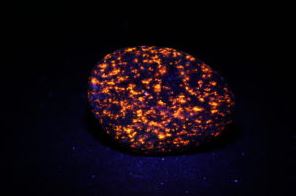Questions? 800-523-5874 | [email protected]
- Prepmaster™ Specimen Preparation Robot
- TEM Grids
- TEM Window Grids
- Omniprobe Nanomanipulation Systems
- K-kit Wet "Liquid" TEM Kit
- Specimen Mounts
- SEM Specimen Holders
- Index and Finder SEM Grids
- SEM for Forensics
- SEM Sample Preparation Station Materials
- Cryogenic Personal Protection Equipment
- Cryo Dewars & Flasks
- Cryogenic Grids & Accessories
- Cryogenic Vials & Racks
- Cooling Chambers & Ice Baths
- Prepmaster™ Specimen Preparation Robot
- Laboratory Microwave Ovens
- LYNX II Automated Tissue Processor
- EMS Poly III
- Microtomes
- Tissue Slicers
- Rapid Immersion Freezer
- Heaters & Chillers
- SEM Cooling Stage
- Glow Discharge Systems
- Sputter Coaters & Carbon Coaters
- Stages
- Freeze Dryers
- Critical Point Dryers
- Cryo-SEM Preparation System
- Specimen Transfer Systems
- Decontaminators
- Desiccators
- Centrifuges
- Dry Baths
- Stirrers, Hot Plates
- Vortexers & Magnetic Mixers
- Rotators & Rockers
- Ovens & Incubators
- Vibration Isolation
- Air Sampling
- Vacuum Pumps
 Sodalite Fluorescence – a Viral Sensation
Sodalite Fluorescence – a Viral Sensation
EMS Catalog #SFA
Sodalite Fluorescence
Recently (early September 2018) a viral video sensation swept the internet. The video shows several individuals combing the shore of Lake Michigan equipped with UV flashlights. Their beams sweep back and forth over a rocky, wave weathered shoreline, ultimately resting on a curious, glowing rock. The camera zooms in, highlighting a large (palm sized) rock glowing brilliantly yellow next to a piece of drift wood.
What is actually happening in this video? What is making this seemingly innocuous rock glow so fiercely yellow? The answer is fluorescence. Specifically – the rock in question is partially composed of a mineral called "Sodalite", which is a fluorescent mineral. Electromagnetic radiation (here light from the UV flashlight) at one wavelength is absorbed by the mineral, which then re-emits radiation at a longer wavelength – in this case, the yellow glow.
The discovery of Sodalite rocks in this area of Michigan's Upper Peninsula (UP) is credited to a resident named Erik Rintamaki. The locals of this area are known as "Yoopers", a colloquialism derived from the abbreviation "UP". Erik affectionately called his discovery "Yooperlites." Rintamaki sent the rocks to geologists at Michigan State University, who told him that this was the first reported case of the mineral in that area. Being scientists, they also told him that the proper scientific designation is "syenite clasts containing fluorescent sodalite," but Yooperlite is a lot more fun. Here at NIGHTSEA we also reached out to our own geological experts and were told the "Yooperlites" did not originate from the Michigan UP, but were brought there over time by continental glacial ice sheets from Canada.
The NIGHTSEA team was first contacted about these mysterious minerals as the viral video was making its rounds. We were asked if any of our flashlight packages would be good for detecting Yooperlites underwater. The offhand answer was "we don't know," but we have the tools and know-how to figure these things out, and the potential customer was kind enough to send us a sample. We put it in our spectrofluorometer, an instrument that can measure the relative ability of different wavelengths to make a subject fluoresce and also the distribution of emitted wavelengths. You can see the results in the graph below. The peak excitation for the Sodalite sample is at about 385nm, in the longwave UV. While our Royal Blue flashlights can work (as can be seen in the photographs below), they aren't as efficient as a UV source would be on a watt per watt basis.
The story of Yooperlites supports our saying that 'Not everything fluoresces, but fluorescence is everywhere.' Sometimes you just have to get out and look.
